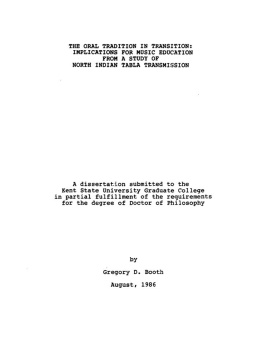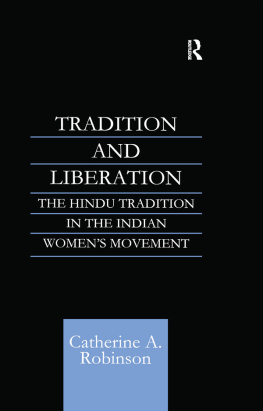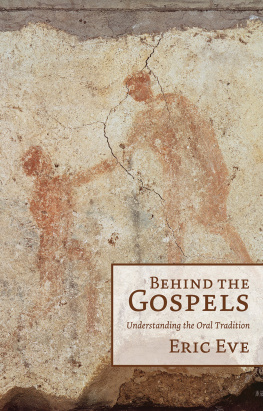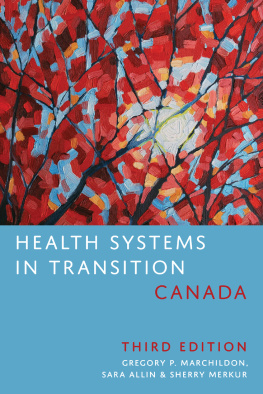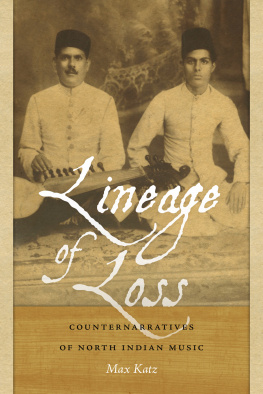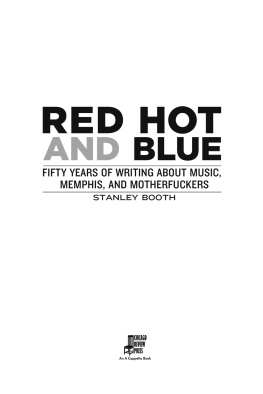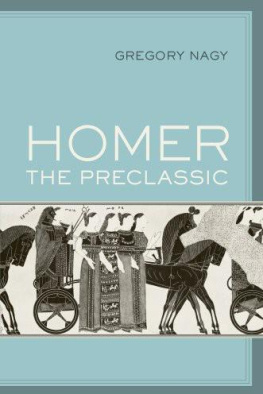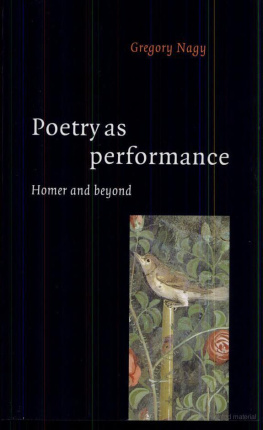Gregory D. Booth - The Oral Tradition in Transition: Implications for Music Education From a Study of North Indian Tabla Transmission
Here you can read online Gregory D. Booth - The Oral Tradition in Transition: Implications for Music Education From a Study of North Indian Tabla Transmission full text of the book (entire story) in english for free. Download pdf and epub, get meaning, cover and reviews about this ebook. year: 1986, publisher: Kent State University, genre: Religion. Description of the work, (preface) as well as reviews are available. Best literature library LitArk.com created for fans of good reading and offers a wide selection of genres:
Romance novel
Science fiction
Adventure
Detective
Science
History
Home and family
Prose
Art
Politics
Computer
Non-fiction
Religion
Business
Children
Humor
Choose a favorite category and find really read worthwhile books. Enjoy immersion in the world of imagination, feel the emotions of the characters or learn something new for yourself, make an fascinating discovery.
- Book:The Oral Tradition in Transition: Implications for Music Education From a Study of North Indian Tabla Transmission
- Author:
- Publisher:Kent State University
- Genre:
- Year:1986
- Rating:4 / 5
- Favourites:Add to favourites
- Your mark:
- 80
- 1
- 2
- 3
- 4
- 5
The Oral Tradition in Transition: Implications for Music Education From a Study of North Indian Tabla Transmission: summary, description and annotation
We offer to read an annotation, description, summary or preface (depends on what the author of the book "The Oral Tradition in Transition: Implications for Music Education From a Study of North Indian Tabla Transmission" wrote himself). If you haven't found the necessary information about the book — write in the comments, we will try to find it.
Gregory D. Booth: author's other books
Who wrote The Oral Tradition in Transition: Implications for Music Education From a Study of North Indian Tabla Transmission? Find out the surname, the name of the author of the book and a list of all author's works by series.
The Oral Tradition in Transition: Implications for Music Education From a Study of North Indian Tabla Transmission — read online for free the complete book (whole text) full work
Below is the text of the book, divided by pages. System saving the place of the last page read, allows you to conveniently read the book "The Oral Tradition in Transition: Implications for Music Education From a Study of North Indian Tabla Transmission" online for free, without having to search again every time where you left off. Put a bookmark, and you can go to the page where you finished reading at any time.
Font size:
Interval:
Bookmark:
ORALITY, LITERACY, AND MUSIC EDUCATION
The fundamental attributes of the oral tradition have been defined by focusing on the psychological and socio-cultural contrasts between the two methods of information processing and transmission, orality and literacy. Conflicts produced by the coexistence of both transmission systems within a single society were also described. It was seen that music, by its very nature as a system of artistic, essentially non-referential communication, is particularly susceptible to these conflicts.
This chapter will examine the history of the oral-literate dichotomy in the context of music education in the United States. It will be seen that the controversies which currently occupy so prominent a place in the music traditions of northern India, over the role of literate technology and the development of teaching as a profession, are ones which have been the centers of equally intense debates among music teachers in the United States. A review of orality and literacy in music education will clarify the relationship between this essentially literate system of music transmission and that described as a result of the present research on music transmission in India. Before such clarification can be achieved, however, a number of preliminary issues must be addressed. These relate to the fundamental relationships between oral and literate performance and educational practices.
There are innumerable music cultures throughout the world that depend largely, if not entirely, on oral transmission, and that exist outside of any institutionalized educational framework. Examples of oral music-cultures include many from Africa, Asia, Europe, and the Americas. In contrast, however, many societies have formalized their educational practices, including their music-educational practices, according to the model which originated in Europe and which was further developed in the United States. These societies demonstrate an approach to music transmission which is directly tied to the institution of public education; music is considered an intrinsic part of the public schooling of all citizens. England, Germany, Canada, and Japan are countries, societies, which, among others, exemplify this approach. The goal of music education, based on the Western model, then, "is nothing less than to provide an education in music for all children everywhere in the country" (Britton, 1966, p. 15).
These two models of music transmission, one based on orality and a highly contextualized, often family-like setting, the other based on literate, non-contextual, institutionalized education, clearly represent extremes. They are, nevertheless, at the heart of the dichotomy between transmission as one of the obligations of a craft, and transmission as a professional, specialist activity. Teaching and learning in a family setting have been described, above, as inherently contextual; these processes do not occur as a separate, income-producing, behavior on the part of the musician or as intentional, goal-directed behaviors on the part of the student. Rather, they are the result of environmental influences and naturally imitative tendencies on the student-child's part and of needs of the teacher-parent for occupational assistance in an activity which is that individual's principal source of income.
It is clear that literate, institutionalized learning differs from this model in all important aspects. The distinctions between oral and literate teaching and learning require emphasis for two reasons. They are crucial to an understanding of the oral tradition in transition. The teachers in this study will, in part, classify themselves, and be classified by, their perception of teaching either as an integral part of their profession as performers or as a means of economic support.
The second reason for stressing the two different approaches to music transmission is central to a discussion of orality and literacy in music education. The conflicts which have characterized much of the history of music education in the United States, between "note-learning" and "rote-learning," are largely the results of tensions created by differences in oral and literate technologies. The technology being used to manipulate information directly affects that information; it requires conformance to its specific format and processing abilities. Further, it has been seen that the cognitive processes which are required or encouraged by literate and oral technologies are highly disparate.
The history of music education in the United States has demonstrated the distinctness of these two technologies. However, it has simultaneously illustrated ways in which literacy and orality may interact in the processes of music transmission. From the middle of the eighteenth century, when the failure of oral transmission of psalm tunes in New England churches first initiated a search for ways of improving music literacy among the general public, to the middle of the twentieth century, which has seen the development of music education methodologies designed to avoid some of the pitfalls of a perceived premature or excessive emphasis on note reading, music educators have continually sought to reconcile the context-dependent, non-referential nature of music with the need to accommodate the demands of an educational system based on the decontextualizing and referential nature of literate technology. A brief explication of oral and literate performance practices and educational goals and methods follows below. This will clarify the relationships between oral and literate methods of transmission and serve as a preparation for the subsequent discussion of the roles of these information-handling systems in the history of music transmission in the United States.
The very appellations which are affixed to the classical music cultures of Europe and India (i.e., literate and oral traditions) point to the essential difference in the conceptualization of music which exists between them. Although the context-dependent nature of music communication ensures that no system of music transmission can achieve a complete independence from oral tradition practices, a literate system is committed to the written symbolization of sound. Literate performance practice, therefore, must be intimately connected with the chirographic encoding and decoding of sounds.
Literate Performance Practice . The Western system of notation, beginning in the ninth century, has gone farther along the continuum of dependence on chirographic technology than any other music culture. Stevens (1975) comments on "the increasingly important role played by the written score, which has developed from a series of general indications, into a set of extremely precise instructions." He goes on to point out that "this line of development has influenced the very idea of what it means to understand music" (p. 37).
One specific outcome of this success in the development of a notation system is relevant to the present discussion: The ability to notate sounds allows for, and may encourage a division of labor between the creator of the music and the performer of the music. Once this division is established, the need for precise notation is increased due to the need for a clear method of communication between the composer and the performer. In addition to notating actual sound items, an attempt must be made to notate context, that aggregate of elements which helps to define the relationship between the sounds and, therefore, contributes significantly to the meaning of those sounds (i.e., tempo, balance, dynamics, timbre, and articulation). Thus, as notation becomes more precise, the composer achieves greater control over the creation and performance of music; consequently, composition becomes more rewarding. It is clear that the drive for increasingly precise notation also serves to support the divergence of the roles of music creator and music performer.
Font size:
Interval:
Bookmark:
Similar books «The Oral Tradition in Transition: Implications for Music Education From a Study of North Indian Tabla Transmission»
Look at similar books to The Oral Tradition in Transition: Implications for Music Education From a Study of North Indian Tabla Transmission. We have selected literature similar in name and meaning in the hope of providing readers with more options to find new, interesting, not yet read works.
Discussion, reviews of the book The Oral Tradition in Transition: Implications for Music Education From a Study of North Indian Tabla Transmission and just readers' own opinions. Leave your comments, write what you think about the work, its meaning or the main characters. Specify what exactly you liked and what you didn't like, and why you think so.

